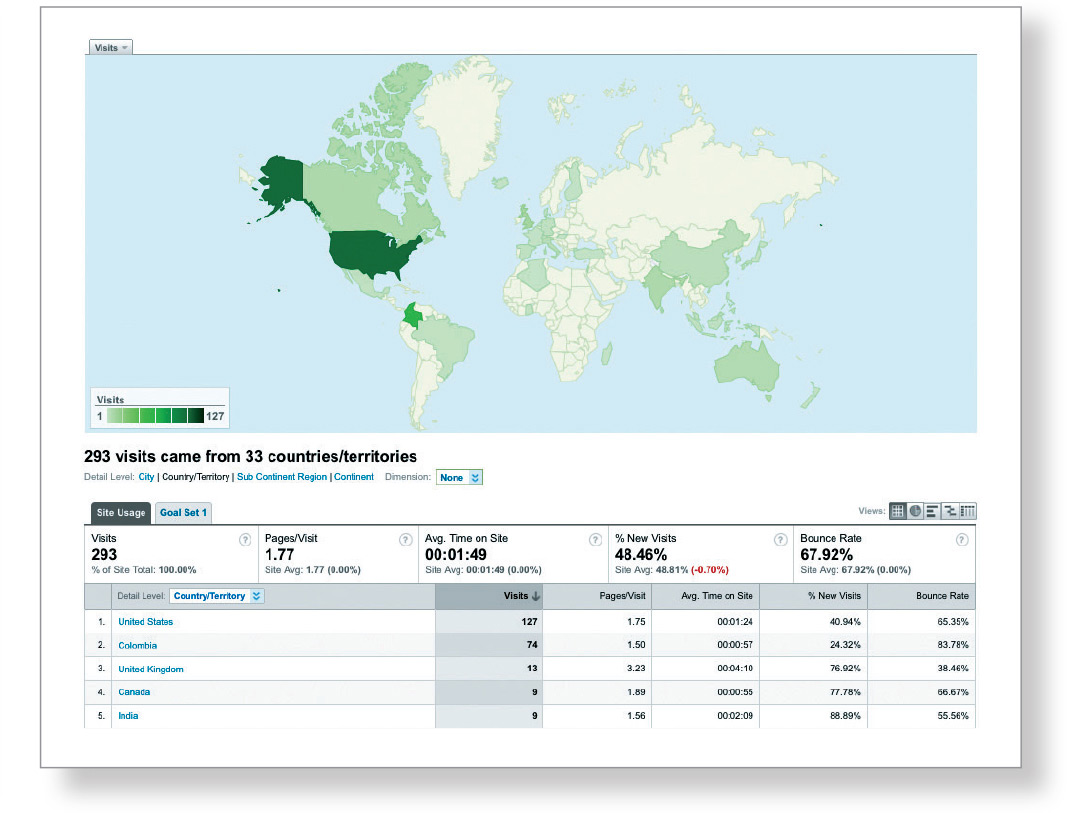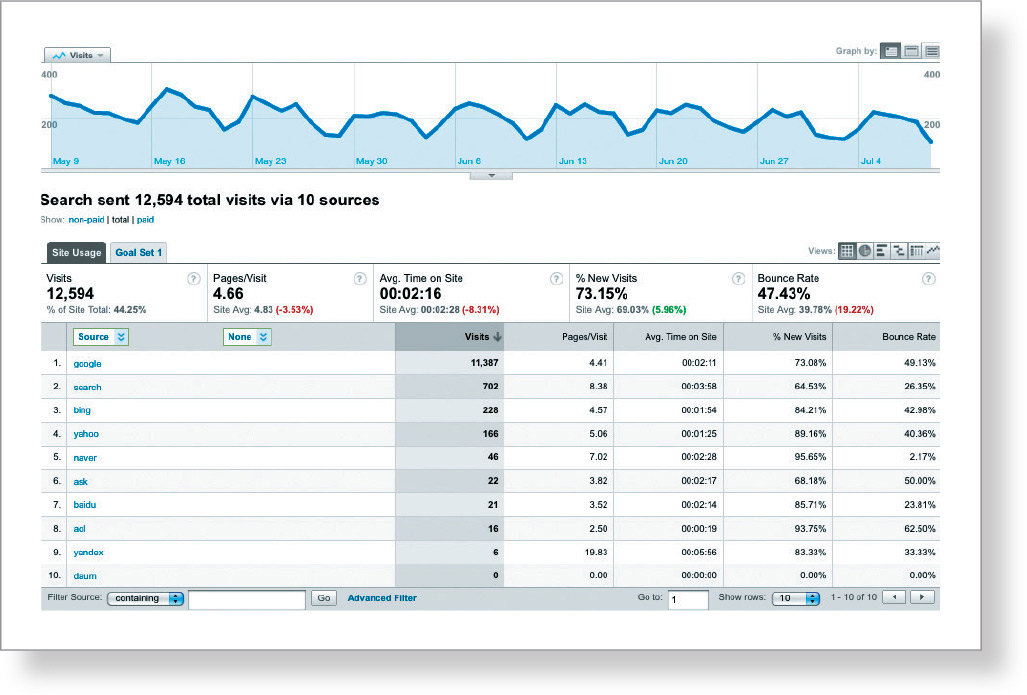SYNTHESIS / ANALYSIS TECHNIQUE • RESEARCH DELIVERABLE
97 Web Analytics

Web analytics are a gateway for your organization to become deeply invested in what your customers are doing online, and why.
The Web Analytics Association defines web analytics as the “measurement, collection, analysis, and reporting of Internet data for the purposes of understanding and optimizing web usage.”1
In theory, this definition rings true, but in practice, the truth for many organizations is that it’s very difficult to gather the right analytics data and know what to do with all of it. The first steps to a successful web analytics discipline in your company are described as follows:2
First, you have to articulate what you want out of the data. Clearly, this is easier said than done, but expressing your goals and your clarity of intent for what you want to measure (and gaining consensus on them) should be done early in the process. Knowing where you want to go can help you to better structure your content, analyze your campaigns, segment your visitors, and measure your commerce and process tools.
Once you’ve determined the information you want to collect and optimized the way it is collected, it’s time to translate all of the data into a report people will want to read. Keep reports short, avoid analytics jargon, and focus on visualizing as much data as you can.3
One reason why analytics projects fail within an organization is that reports aren’t openly shared and their findings are not effectively communicated. Once you have reports, the focus must shift to the regular reporting and distribution of reports to internal stakeholders.
The next critical step is implementing and acting on the knowledge. All too often, either the reports are reviewed for information regarding “what just happened” as opposed to “what can I do now” and no actions are taken; or too many changes are implemented at once and there is no way to track which changes had an impact. When deciding on what changes to make, focus on the micro, not the macro. Small course corrections can have a big impact.
Finally, track the results of the small efforts, share the results, and refine as needed. Document what works well, and what doesn’t work well, and avoid trying the same thing over and over again.
Whether analytics data is analyzed alone or combined with methods like eyetracking, usability tests, A/B tests, or site search analytics, web analytics can paint a broader, more realistic picture of what people are doing when visiting your site.
1. Web Analytics Association WAA
2. Peterson, Eric. Web Analytics Demystified, 2004, http://www.webanalyticsdemystified.com
3. Burby, Jason. Three Reasons Analytics Fail Companies, 2004, http://www.clickz.com
Further Reading
Kaushik, Avinash. Web Analytics: An Hour a Day. Indianapolis, IN: Sybex, 2007.
Kaushik, Avinash. Web Analytics 2.0: The Art of Online Accountability and Science of Customer Centricity. Indianapolis, IN: Sybex, 2009.
Peterson, Eric. Web Site Measurement Hacks: Tips & Tools to Help Optimize Your Online Business. Sebastopol, CA: O’Reilly, 2005.
Sterne, Jim. Web Metrics: Proven Methods for Measuring Web Site Success. New York: Wiley, 2002.
The Portland, Oregon, firm Webtrends made the first commercially available web analytics program in 1995. Also in 1995, Dr. Stephen Turner from Cambridge, UK, created Analog, a free log file analyzer.



Courtesy of Carnegie Mellon University School of Design

The best web analysts will understand your business and the web in equal measures, and use tools such as Google Analytics, above, to make recommendations for corrective measures. They can help you decide the best way to segment your data including by source (or referrer), by behavior (by what users are doing), and outcome (what goals were met).

